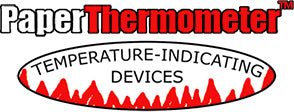Finishing Wood Products Using 3D Lamination

Shop our selection of Thermolabels for Cabinets/Furniture Making
The process of finishing furniture components, cabinets, doors, kitchen fronts and wood molding by laminating decorative foils has become industry standard.
3D laminating involves PVC or PET decorative foils commonly known as rigid thermoformable foil (RTF). This is hot glue laminated onto particleboard or MDF following the contours of the substrate giving it a durable finish layer. The process requires specialized machinery but produces amazing finished pieces. Paper Thermometer temperature labels are an important quality control tool used in 3D lamination. Lets go over the types of machines used for this process and the differences between them.
Types of Laminating Presses
Three main types:
- Vacuum (Single Chamber) Press
- Two Chamber Press
- Three Chamber (Membrane) Press
Positive pressure presses are a step up from the vacuum press. There are two different types: two and three chamber machines.

The most complex option is the three chamber machine or membrane press. In the first chamber is a vacuum pulling from below like a single and two chamber machine. The second chamber is providing positive air pressure from above like the two chamber press. The third chamber is in the middle. It is what makes a membrane press what it is. The chamber can produce airflow in both directions. It firstly creates a vacuum which brings the overlay into close contact with the membrane during heating to eliminate wrinkles. Then the vacuum of the first chamber pulls the overlay (with the membrane) down onto the substrate. The positive pressure from the upper chamber pushes downward onto the membrane, overlay and substrate to create the details of the piece. The middle chamber then creates positive air pressure which acts to separate the membrane from the piece and begin cooling.
To make sure your process is reaching the correct temperature for a quality bond between substrate and thermofoil, use our selection of Thermolabel temperature labels for cabinet and furniture manufacturing.
Our most popular Thermolabel temperature label used by cabinet and wood product companies of all sizes is our 8-Temp THERMOLABEL 130-200°F.
For much more information on 3D Laminating, try here:
https://www.woodworkingnetwork.com/best-practices-guide/gluing-laminating-veneering/unwrapping-mystery-behind-3d-laminating
